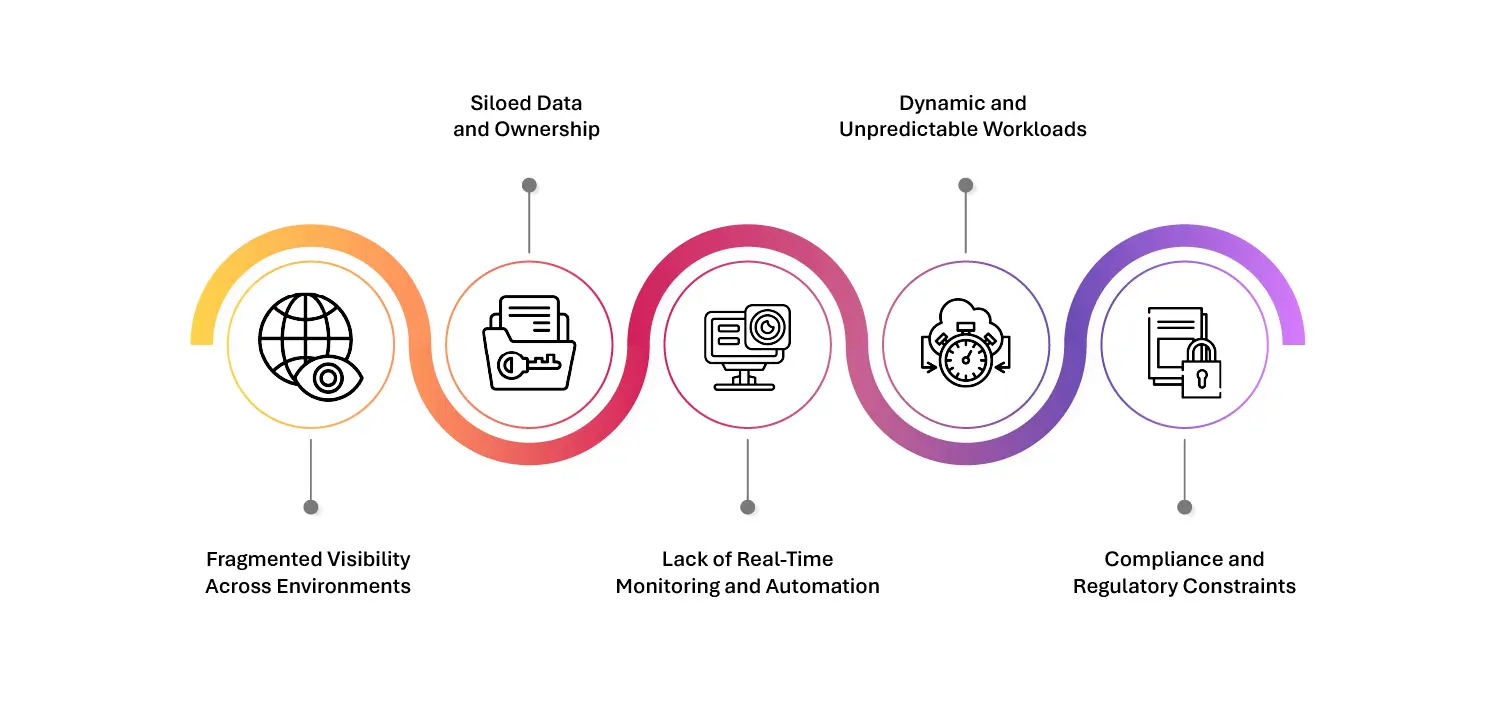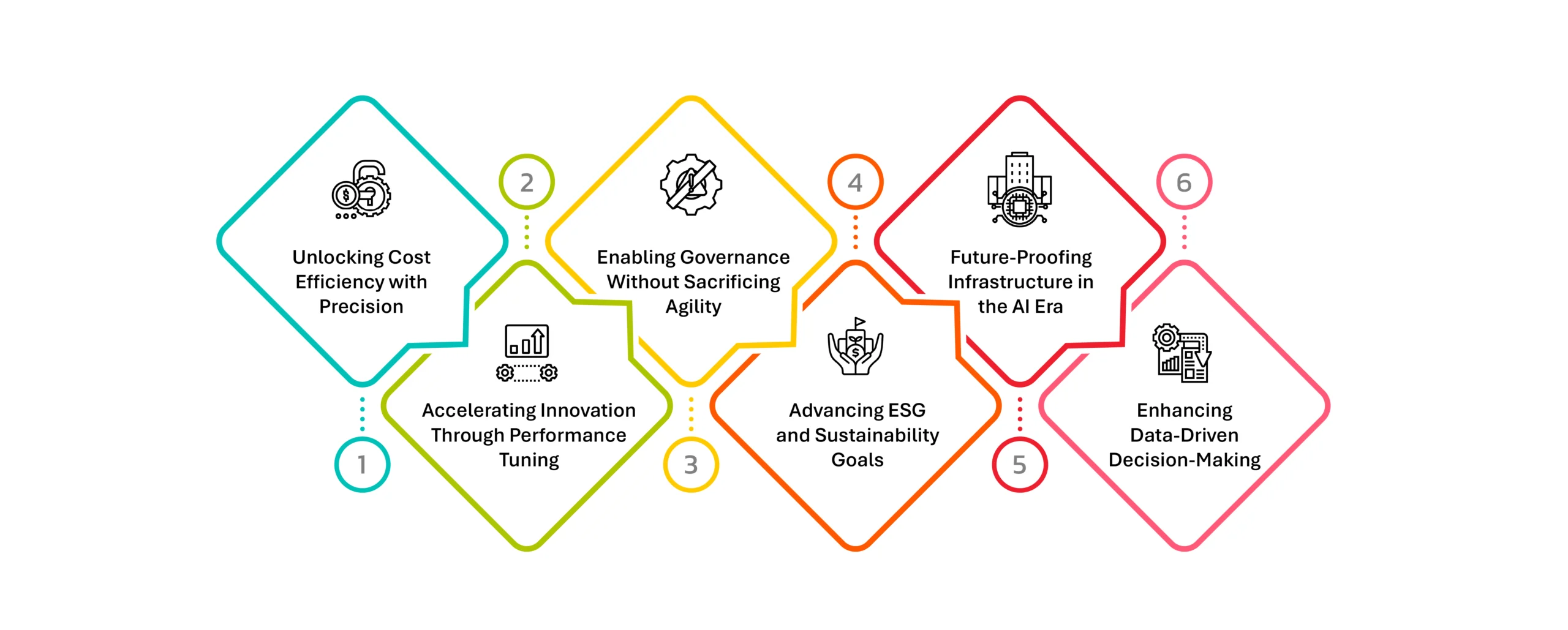What is Cloud Optimization?
Cloud Optimization refers to the strategic process of improving the performance, cost-efficiency, and resource utilization of cloud environments. It ensures that cloud infrastructure—whether hybrid, public, or private—is right-sized, well-architected, and aligned with actual workload demands, without compromising on performance or compliance.
As organizations increasingly migrate to the cloud, optimizing their deployments becomes a business imperative—not just for cost savings, but also to meet sustainability goals, enhance application speed, and maintain governance.
Why Cloud Optimization Matters
Modern enterprises operate in a digital-first world where agility and scalability are key. But cloud services, when not continuously monitored and optimized, can lead to resource wastage, spiraling costs, and performance bottlenecks.
According to a report, organizations waste an estimated 32% of cloud spend due to underused or idle resources. Cloud optimization helps reduce this waste, ensure regulatory compliance, and align usage with business objectives.
Challenges in Cloud Optimization

While cloud optimization offers immense potential, executing it effectively comes with its fair share of hurdles, many of which stem from the complexity and scale of modern IT environments.
- Fragmented Visibility Across Environments: In hybrid and multi-cloud setups, workloads are often spread across various regions, platforms, and service providers. Without a centralized dashboard or unified observability framework, it becomes difficult to track usage patterns, costs, and performance metrics holistically. This fragmented view hampers timely decision-making and leads to missed optimization opportunities.
- Siloed Data and Ownership: Different teams (e.g., DevOps, IT, Finance, Security) often have data ownership over different parts of the cloud estate. This division can result in inconsistent policies, redundant resources, and unclear accountability, making optimization a cross-functional challenge rather than a technical one alone.
- Lack of Real-Time Monitoring and Automation: Manual processes for tracking cloud performance or identifying idle resources often result in delayed remediation. Optimization efforts that rely on periodic audits or human intervention are inherently reactive. Without AI-driven insights and automated enforcement, the window for optimization often closes before action is taken.
- Dynamic and Unpredictable Workloads: Cloud environments are inherently elastic, which is a strength, but also a challenge. Workloads that scale up or down based on demand can be difficult to right-size consistently. Over-provisioning leads to wasted spend, while under-provisioning can compromise application performance.
- Compliance and Regulatory Constraints: Cloud resources may need to comply with various regulatory frameworks (GDPR, HIPAA, DPDP, etc.), which can limit optimization options. For example, data sovereignty rules may restrict moving workloads across regions, even if doing so could improve performance or reduce costs.
Cloud Optimization in the Context of Hybrid and Multi-Cloud Environments
The modern enterprise doesn’t operate within a single cloud—it navigates a complex constellation of hybrid and multi-cloud ecosystems. From legacy infrastructure on-premises to hyperscale platforms across regions, organizations are blending environments to meet performance, regulatory, and cost requirements.
But this architectural freedom comes with a price: complexity. Each platform has its own configurations, pricing models, security protocols, and data gravity. Without a cohesive strategy, cloud sprawl can quickly erode the very agility it promises.
This is where intelligent cloud optimization becomes a strategic enabler. It’s about orchestrating workloads across diverse environments precisely, ensuring the right data lives in the right place, at the right time, for the right purpose. It involves unified visibility across clouds, dynamic policy enforcement, automated storage tiering, and real-time performance tuning.
Optimization within hybrid and multi-cloud isn’t just about infrastructure management—it’s about creating a fluid, responsive foundation that supports business velocity, governance, and innovation at scale.
Strategic Benefits of Cloud Optimization

Cloud optimization is no longer a cost-control exercise—it’s a strategic lever for business transformation. In an era where data volumes are exploding and AI workloads are reshaping digital infrastructure demands, how organizations manage their cloud environments can determine their ability to compete, innovate, and scale responsibly.
- Unlocking Cost Efficiency with Precision: Rather than chasing broad budget cuts, cloud optimization enables targeted cost control by aligning infrastructure usage with real-time business needs. It helps enterprises shift from reactive budgeting to intelligent, predictive resource allocation, ensuring every dollar spent drives measurable value.
- Accelerating Innovation Through Performance Tuning: Optimized cloud environments are faster, more agile, and more responsive to evolving application demands. Whether it’s enabling real-time analytics, supporting AI workloads, or ensuring uninterrupted user experiences, cloud performance directly impacts innovation velocity and time-to-market.
- Enabling Governance Without Sacrificing Agility: The right optimization strategy builds governance into the foundation—automating policy enforcement, access controls, and data placement—while preserving the flexibility developers and business units need. This balance is critical in industries where agility and compliance must go hand in hand.
- Advancing ESG and Sustainability Goals: Sustainability has emerged as a boardroom priority. Cloud optimization helps reduce energy waste, consolidates underused storage, and ensures that compute cycles are used purposefully. By minimizing environmental impact, organizations not only lower operational costs but also build trust with investors, regulators, and customers.
- Future-Proofing Infrastructure in the AI Era: As AI and data-intensive workloads become the new normal, the need for scalable, adaptive infrastructure is paramount. Optimization lays the groundwork for continuous readiness—allowing enterprises to seamlessly integrate new technologies without overhauling existing systems.
- Enhancing Data-Driven Decision-Making: An optimized cloud delivers more than performance—it generates actionable insights. By tracking consumption patterns, anomaly behaviors, and usage trends, organizations gain a strategic vantage point to refine operations, forecast demand, and plan infrastructure investments proactively.
Cloud Optimization is not a one-time project—it’s a continuous journey of assessing, refining, and adapting to changing business and application needs. With the right tools, visibility, and strategy, organizations can transform their cloud infrastructure into a dynamic, cost-effective, and sustainable foundation for innovation.
Getting Started with Data Dynamics:
- Learn about Unstructured Data Management
- Schedule a demo with our team
- Read the latest blog: AI, Ethics, and Compliance: The Next Frontier in Global AI Leadership






